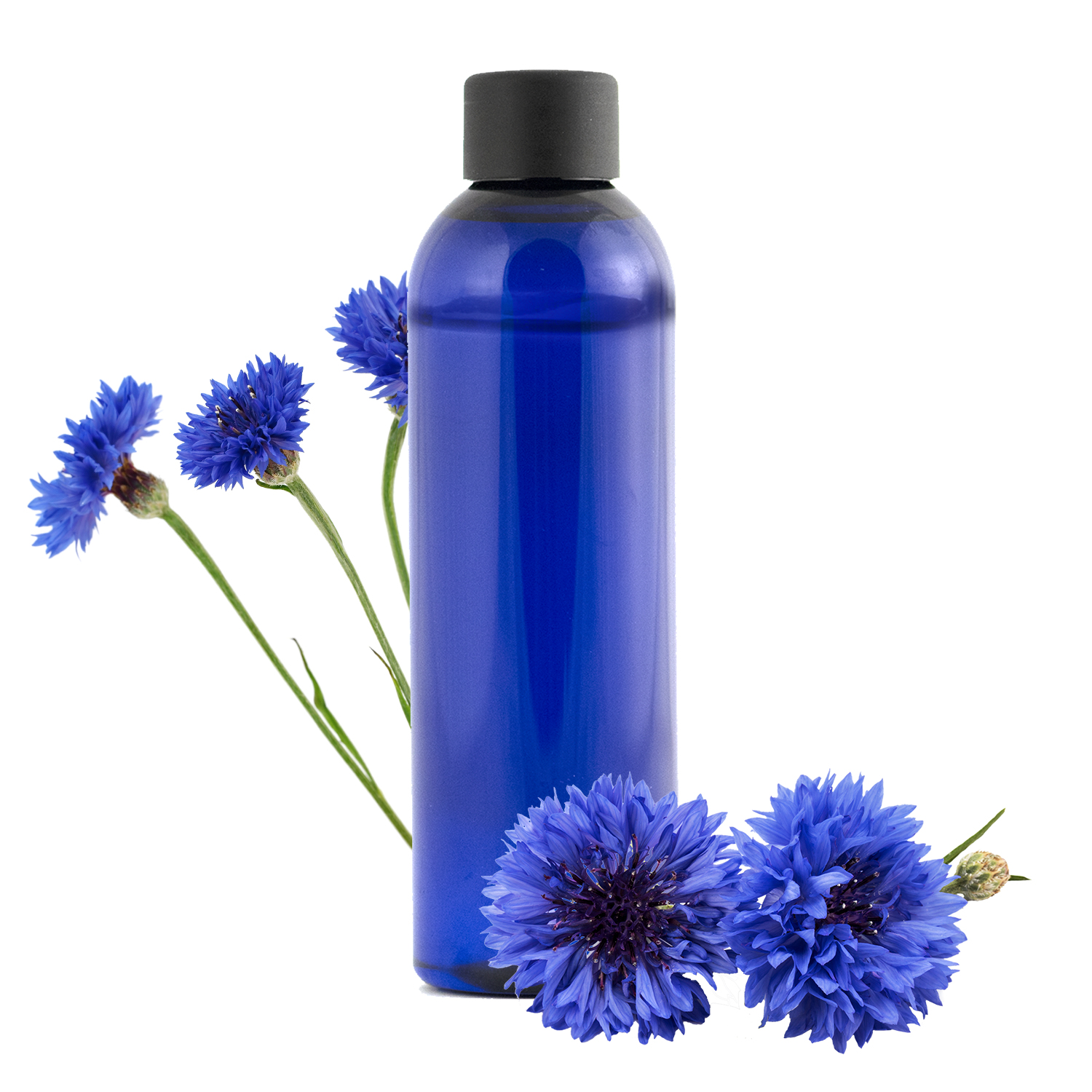
Hydrosols are not systematically by-products of essential oils. This is the case of Cornflower, whose hydrosol is widely known, and which nevertheless does not produce essential oil! It is the floral water par excellence for relieving eye conditions such as conjunctivitis, stye, irritated or tired eyes. It is also soothing and anti-inflammatory to the skin. Latin name: Centaurea cyanus L. Distilled part: flowers
This article was updated on 06/01/2023Who can use it?
Main properties
-
anti-inflammatory :
in vitro studies of Cornflower hydrosol have demonstrated that it limits the production of pro-inflammatory molecules in the skin. Various clinical evaluations have also demonstrated its in vivo activity in reducing dark circles, bags and subocular wrinkles.
-
astringent, decongestant :
cornflower hydrosol will tone the skin tissue and tighten pores thanks to its astringent action, which will improve the appearance of the skin. At the ophthalmic level, it decongests swollen eyes and eyelids.
-
anti-oxidant :
cornflower hydrosol has an anti-oxidant effect to combat the formation of oxygenated chemical species linked to cellular aging.
-
soothing :
the main property of Cornflower is to soothe tired and irritated eyes from pollution, allergies or simply fatigue. It also soothes skin irritated or damaged by the sun, for example.
In case of Conjunctivitis, Stye
Efficiency: ++++
Simple use
From 3 months. Through the skin, apply a sterile compress soaked in a teaspoon of Cornflower hydrosol to the affected and closed eye. Hold for 5 to 10 minutes, 3 times a day. If necessary, soak the compress a second time during the treatment.
Use in synergy
From 3 years. Use the following mixture as a gentle spray or eye wash, 3 times a day.
- 50 mL of Cornflower hydrosol
- 50 mL of Myrtle hydrosol
Source: Zahalka, JP (2017). Complete dictionary of hydrosols and floral waters: 100 pathologies treated. -: Dolphin.
For the Tired eyes, Irritated eyes
Efficiency: ++++
Simple use
From 3 months. Dermal, apply a compress soaked in Cornflower hydrosol to the eyes and their contours, twice a day for 5 minutes.
Use in synergy
From 3 months. Through the skin, apply a compress soaked in the following mixture to closed eyes for 5 to 10 minutes, morning and evening:
- 1 teaspoon of Cornflower hydrosol
- 1 teaspoon of Roman Chamomile hydrosol
Source: Faucon, M., & Canac, P. (2018). Treatise on scientific and medical aromatherapy, hydrosols (1st ed.). Paris: Ed. Blood of the Earth.n.
In case of Insect bite, Mild burn, Irritated skin, Stings
Efficiency: +++
Simple use
From 3 months. Dermal, spray Cornflower hydrosol, or soak a compress to apply to the affected area.
In case of' Canker sore, Gingivitis
Efficiency: ++
Simple use
From 3 months. Orally, spray 1 to 2 times in the mouth at the gum or canker sore.
From 3 years. Orally, dilute 2 teaspoons of hydrosol in half a glass of water, then use mouthwashes 2 to 3 times a day.
Characteristics and composition
Cosmetic features
- Skin type: dry, irritated, mature, dull, sensitive.
Main molecules
- linalool
- α-terpineol
- 1,8-cineole (eucalyptol)
Organoleptic characteristics
- Appearance: mobile liquid
- Color: colorless to whitish
- Odor: herbaceous, sweet, lemony.
- Taste: herbaceous.
- PH: 4.5 to 6.0
Botanical characteristics
- Latin name: Centaurea cyanus L.
- Botanical family: Asteraceae
- Distilled part: flowers
- Country of origin: Metropolitan France.
Was this article helpful to you?
Average grade: 4.8 ( 303 votes)
Bibliography
Publication: Garbacki, N., Gloaguen, V., Damas, J., Bodart, P., Tits, M., & Angenot, L. (1999). Anti-inflammatory and immunological effects of Centaurea cyanus flower-heads. Journal of Ethnopharmacology, 68(1-3), 235–241. https://doi.org/10.1016/s0378-8741(99)00112-9
Work : Faucon, M., & Canac, P. (2018). Treatise on scientific and medical aromatherapy, hydrosols (1st ed.). Paris: Ed. Blood of the Earth.
Work : Dalmas, P. (2012). Guide to floral waters and hydrosols. Paris: Ed. Medici.
Work : Bosson, L. (2015). Hydrolatherapy. Brussels: Editions Amyris.
Work : Zahalka, J.P. (2017). Complete dictionary of hydrosols and floral waters: 100 pathologies treated. -: Dolphin.


